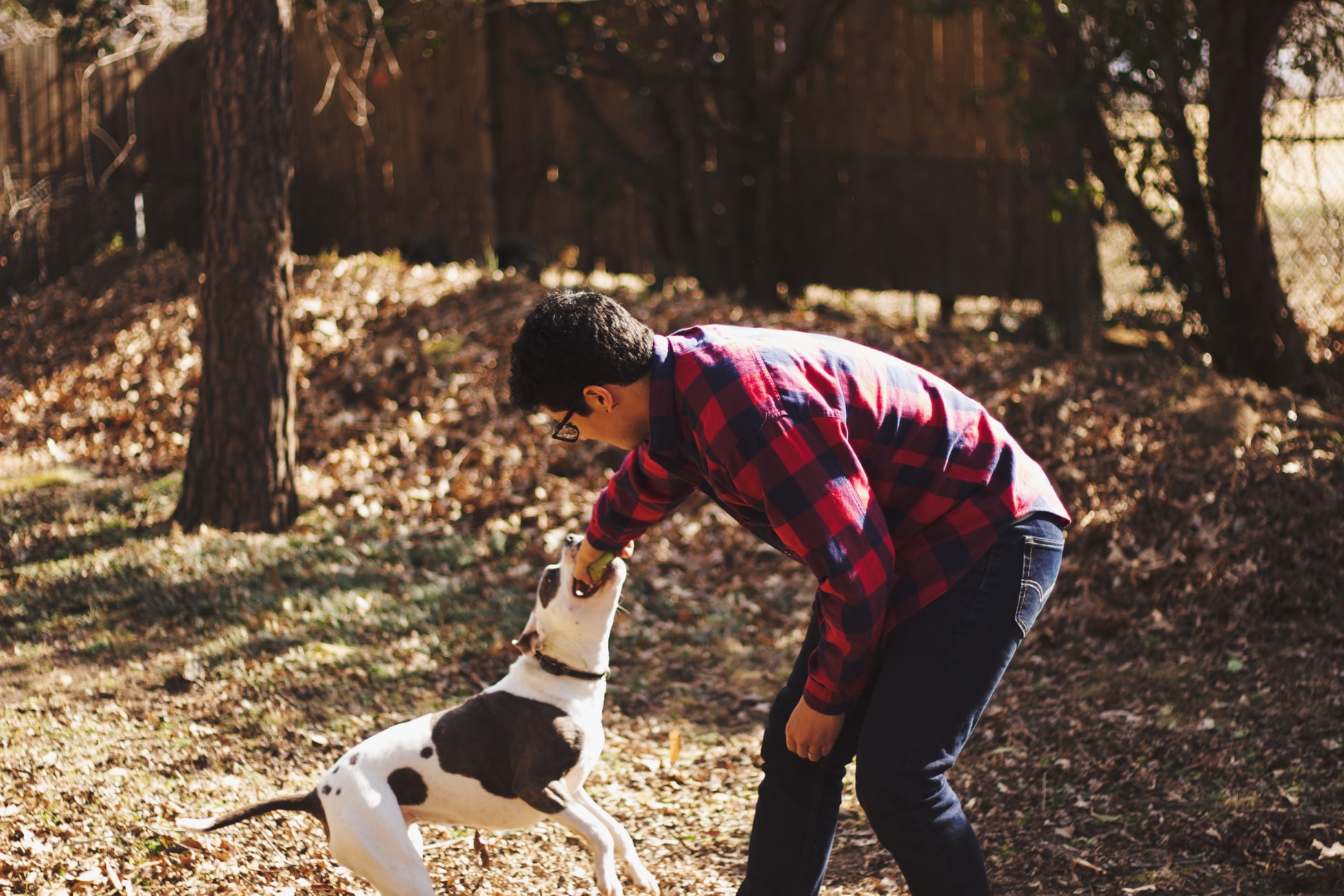Many animals have a natural tendency to guard access to valuable resources, such as food, mates, and territory. Dogs are no exception, and when companion canines begin growling over the food bowl, this resource guarding can present quite a challenge for owners.
Food guarding in dogs can be characterized along a continuum of aggression intensity. At the mild end, a dog may freeze or give a hard, sidelong glance to the owner who approaches while the dog is eating. She may eat faster as the owner approaches, or may lower her head deeper into the food bowl, holding her nose still and close to the food. Beyond these more mild forms of food guarding, a dog may growl, quiver a lip, show teeth, or snap. At the most intense end of the continuum, she may bite anyone who approaches her food bowl area. I have even had clients whose dogs will charge away from the food bowl and toward the owner, aggressively attempting to bite, even when the owner is in another room altogether.
When I ask clients whether their dog is aggressive over food, I am surprised by how many report that they don’t know because they wouldn’t dare approach their dog while she is eating in the first place. Although this may be the safest short-term management technique for dogs already exhibiting aggression around the food bowl, it can be an unsafe long-term approach to the problem, as there may be unforeseen circumstances that arise in which a dog is approached while eating. If aggression is the dog’s first response in this situation, a bite could be just around the corner.
The ideal interaction between owner and dog over the food bowl goes something like this: When the owner approaches Bella while she is eating and calls her name, Bella looks up happily, tail wagging, steps away from the food bowl and/or sits. Bella’s body language is loose and her facial expression is relaxed and expectant (because she has learned that something wonderful is provided to her when she leaves her food bowl). The owner rewards her, picks up the food bowl if necessary, then returns it and releases Bella with an “OK!”, at which point Bella moves back into her food bowl and continues eating. Having said that, I hasten to add that this does not mean you should take your dog’s food away regularly while she is eating. In fact, repeatedly jumping in to take food away from an eating dog might actually teach defensive aggression and resource guarding by creating perceived competition over the bowl. At the same time, to have a safe canine family member, owners should feel comfortable that should they need to, they would be able to move or take food away. So, how do we teach the right response around food without creating or increasing guarding behavior?
To train this with a nonaggressive dog, owners must first obtain some highly desirable food item, such as a piece of chicken, that is more exciting/appealing to their dog than her regular food. While the dog is eating her meal, the owner should pass by and say the dog’s name in a happy voice. If the dog glances up, the owner should immediately praise her and toss or hand deliver the chicken. (If the dog does not glance up when she hears her name, the owner must first train her to do so in other situations before asking her to do so around her food bowl.) After multiple repetitions of this wherein the dog reliably looks up at the owner in response to her name being called and the owner’s approach, the owner can then require the dog to move away from the food bowl altogether to receive her treat before releasing her to return to her food bowl to eat. To do this, the owner might use the treat as a lure at first to have the dog step a foot or so away from the bowl to reach the owner’s treat in hand. In other circumstances, the owner might prefer to teach the dog to stay while the owner places the treat into the food bowl before releasing the dog to eat. Eventually, the owner can move to simply calling the dog’s name occasionally during a meal, providing praise for her looking up and away from her food bowl. It is wise for the owner to maintain an occasional meat or other high-value treat as reinforcement for this behavior to help ensure the response persists over long periods of time. (That is, praise could be delivered every time the dog looks away from eating momentarily in response to her name, and a treat yummier than her dog food could be tossed as well every third or fourth time this is done.)
If the dog is already exhibiting aggression around her food bowl, this procedure may not be safe and should not be implemented without the coaching and supervision of a professional. If your dog is exhibiting aggression, you should contact a Certified Applied Animal Behaviorist or board certified veterinary behaviorist for assistance.




